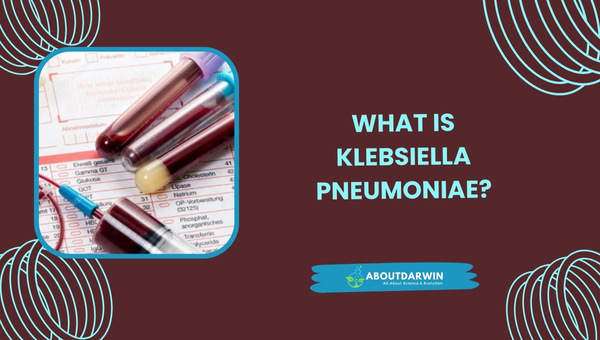Physical Address
304 North Cardinal St.
Dorchester Center, MA 02124
As I delve into the microscopic world of bacteria, there’s a certain bacterium that continually pops up on my radar – Klebsiella pneumoniae. This infamous and versatile microorganism is renowned for its persistence and resilience, quite literally a textbook instance of bacterial adaptability.
This extensive blog post isn’t just about throwing scientific terminologies your way. It’s aimed to break down the complex processes involved in biochemical testing, specifically for identifying Klebsiella pneumonia.
By the end, you will have a comprehensive understanding of this organism, its implications on health, and how we can safeguard against it. Strap in as we journey into this microscopic universe!
| Basic Characteristics | Properties (Klebsiella pneumoniae) |
|---|---|
| Flagella | -ve |
| TSIA (Triple Sugar Iron Agar) | A/A |
| Pigment | -ve |
| Nitrate Reduction | +ve |
| Gelatin Hydrolysis | -ve |
| Growth in KCN | +ve |
| H2S | -ve |
| Indole | -ve |
| Motility | -ve |
| MR (Methyl Red) | -ve |
| MUG Test | +ve |
| Oxidase | -ve |
| Shape | Rod |
| Spore | -ve |
| Urease | +ve |
| VP (Voges Proskauer) | +ve |
| Catalase | +ve |
| Citrate | +ve |
| Gram Staining | -ve |
| Capsule | +ve |
| Fermentation of | |
| Adonitol | +ve |
| Arabinose | +ve |
| Arabitol | +ve |
| Cellobiose | +ve |
| Erythritol | -ve |
| Esculin Hydrolysis | +ve |
| Glucose | +ve |
| Glycerol | +ve |
| Inositol | +ve |
| Lactose | +ve |
| Maltose | +ve |
| Mannitol | +ve |
| Mannose | +ve |
| Melibiose | +ve |
| Mucate | +ve |
| MyoInositol | +ve |
| Raffinose | +ve |
| Rhamnose | +ve |
| Salicin | +ve |
| Sorbitol | +ve |
| Sucrose | +ve |
| Tartrate | +ve |
| Trehalose | +ve |
| Xylose | +ve |
| Enzymatic Reactions | |
| Acetoin Production | Variable |
| Arginine Dehydrolase | -ve |
| Esculin Hydrolysis | +ve |
| Lipase | -ve |
| Lysine | +ve |
| ONPG (β-galactosidase) | +ve |
| Ornithine Decarboxylase | -ve |
| Phenylalanine Deaminase | -ve |
| Tryptophan Deaminase | -ve |
| Tyrosine Hydrolysis | -ve |
Contents
As I began my research into the intricate world of microbiology, one microorganism that continually fascinated me was Klebsiella pneumoniae. This particular bacterium, believe it or not, is part of the Enterobacteriaceae family and is named after the scientist who discovered it, Edwin Klebs.

You will typically find this bacterium in your intestines (don’t worry- it’s normally harmless in there!). But when it finds its way into other parts of your body, that’s where complications can arise.
When I started to dissect the impact of Klebsiella pneumoniae on human health, its clinical significance became quite clear. This powerful bacterium has been linked to a bevy of diseases.
From causing types of pneumonia (hence part of its name) to leading to serious infections such as bloodstream infections and meningitis – you definitely don’t want these bacteria roaming free in the wrong areas!
Also Read: Unveiling MacConkey Agar: Composition, Principles, and Uses
The tests required are as follows:

Two main Tests are briefly mentioned below :
Have you ever wondered how medical professionals can tell different types of bacteria apart? Take, for instance, Klebsiella pneumoniae. This bacterium can be very tricky to identify, but that’s where lab tests like the indole test come into play.
The indole test is a biochemical method used in microbiology to detect the ability of an organism to degrade amino acids into indole. It simply involves adding a drop of reagent to a bacterial culture.
If the layer atop changes color, then it’s positive – meaning our suspected Klebsiella pneumoniae isn’t what we thought it was because this organism is actually indole negative! So, when we don’t see any color change, it further confirms our suspicion regarding its presence. Small steps like these help map out the bacterial identification path, leading us toward accurate diagnosis and efficient treatment plans.
The Methyl Red/Voges-Proskauer (MRVP) Test is an outstanding hallmark in epidemiology, giving us a firm footing to differentiate between various types of bacteria. This test revolves around the reaction produced by the bacteria when subjected to specific chemicals – methyl red and Voges-Proskauer reagents.
For Klebsiella pneumoniae, it’s the Voges-Proskauer part of the test that comes into play. This bacterium distinctly stands out by rendering a positive result due to its capacity to ferment glucose into non-acidic end products like butylene glycol.
Also Read: Selenite F Broth: Cultivate Microorganisms with Precision
Klebsiella pneumoniae often causes urinary tract infections, pneumonia, and bloodstream infections. Occasionally, it can cause liver abscesses and wound infections.
Biochemical tests primarily aim to differentiate between various species of bacteria and identify them accurately. These tests allow us to understand the metabolic properties of the bacteria, which is essential in diagnosis and treatment.
Yes, Klebsiella Pneumoniae is notorious for its resistance to many antibiotics, including carbapenems – often considered drugs of last resort. This deadly combination of virulence and resistance makes it a significant concern in healthcare settings.
Yes, techniques such as PCR (Polymerase Chain Reaction) enable quicker identification compared to traditional methods like culture-based identification or biochemical testing alone; however, these may not always be available in every clinical setting.
Also Read: Understanding Normal Laboratory Values: A Guide to Lab Test
In closing, understanding and identifying Klebsiella pneumoniae is of utmost importance in the world of microbiology and clinical medicine. Through the use of biochemical tests, we can diagnose and treat infections more effectively, which significantly improves patient outcomes.
New research directions are also rapidly advancing our knowledge about this bacterium’s behaviors, allowing us to come up with new diagnostics methods. Despite being a complex process, biochemical testing has made it possible to tackle Klebsiella pneumoniae-related diseases, thereby ensuring a healthier future for all.